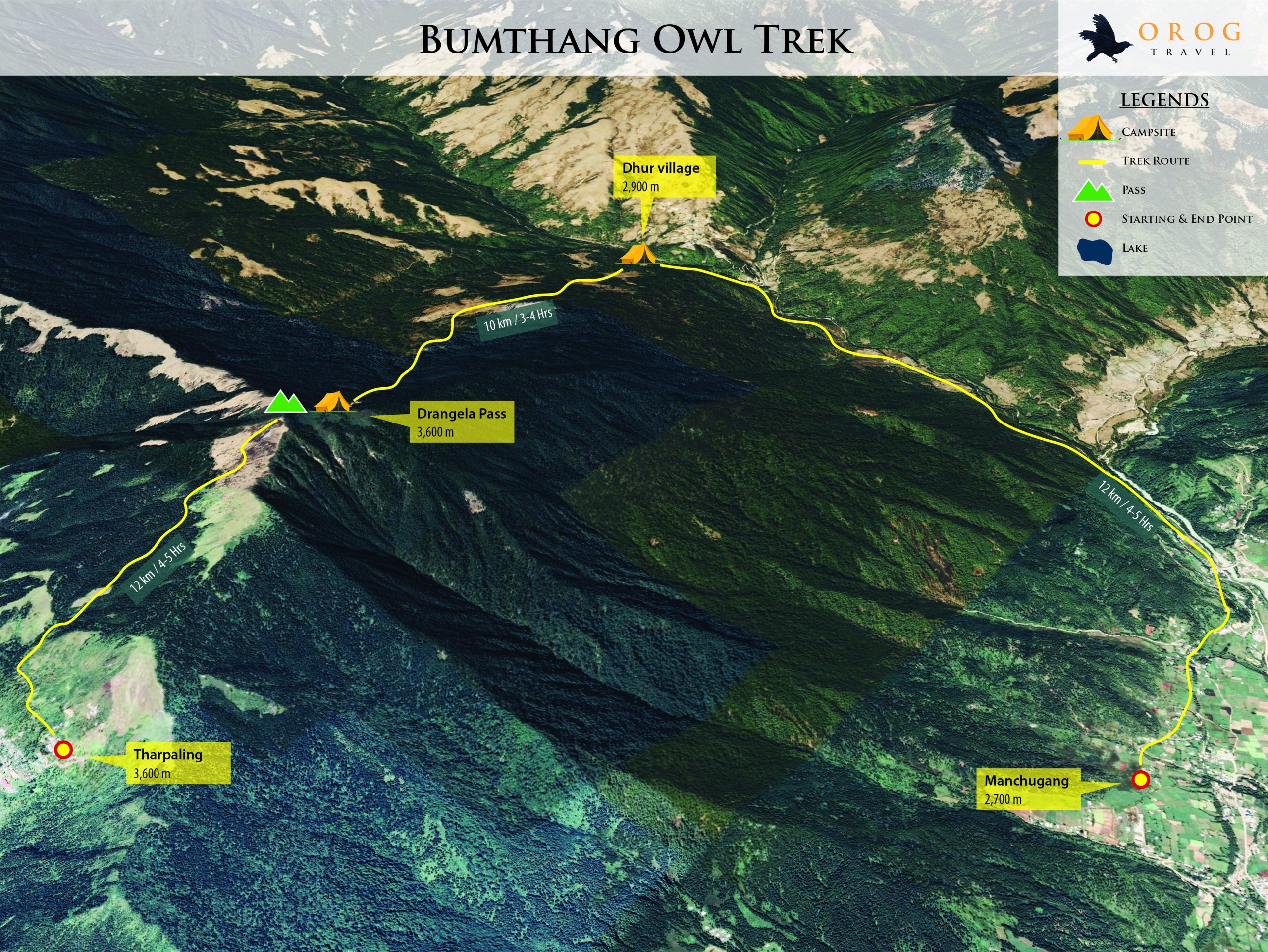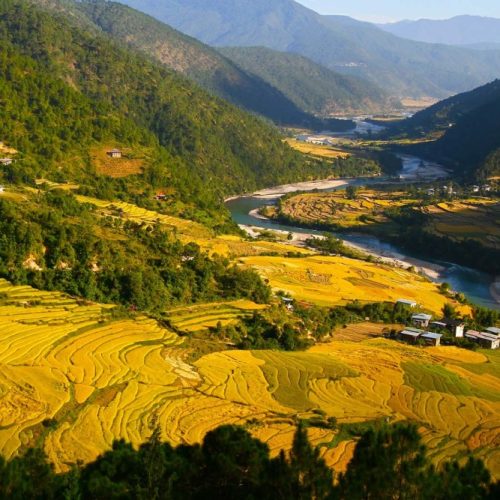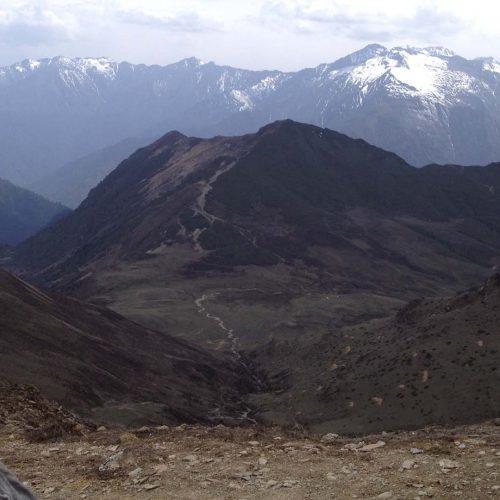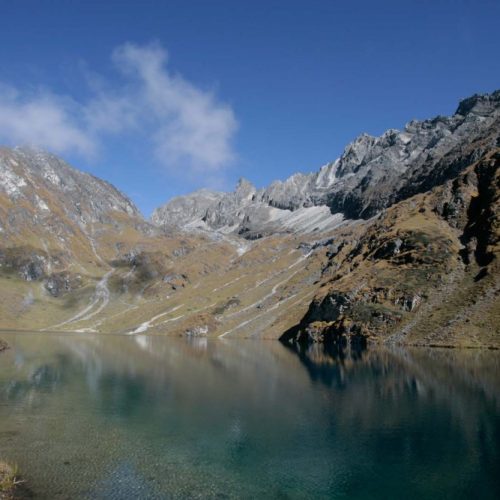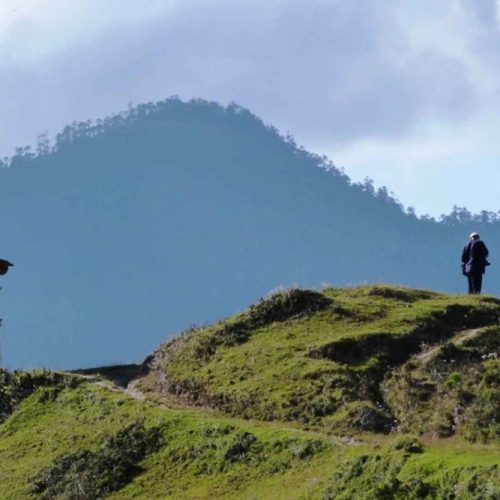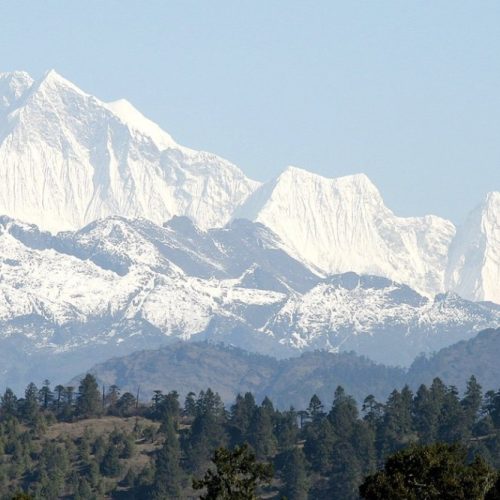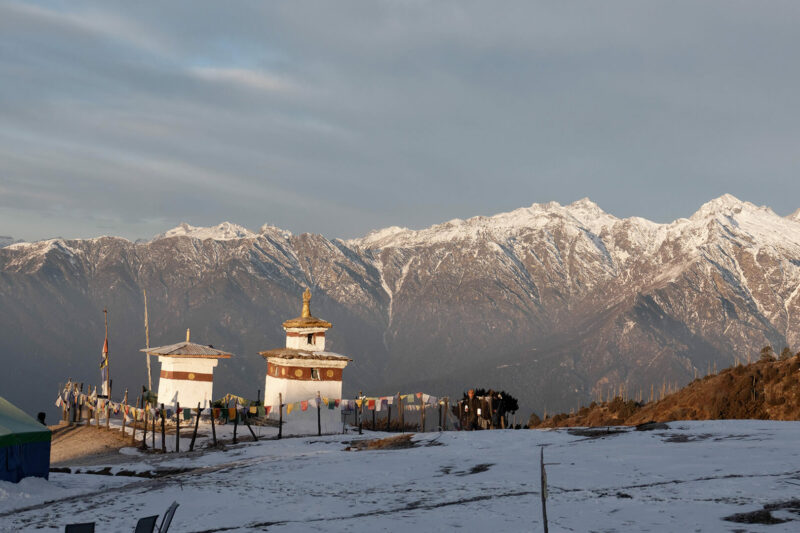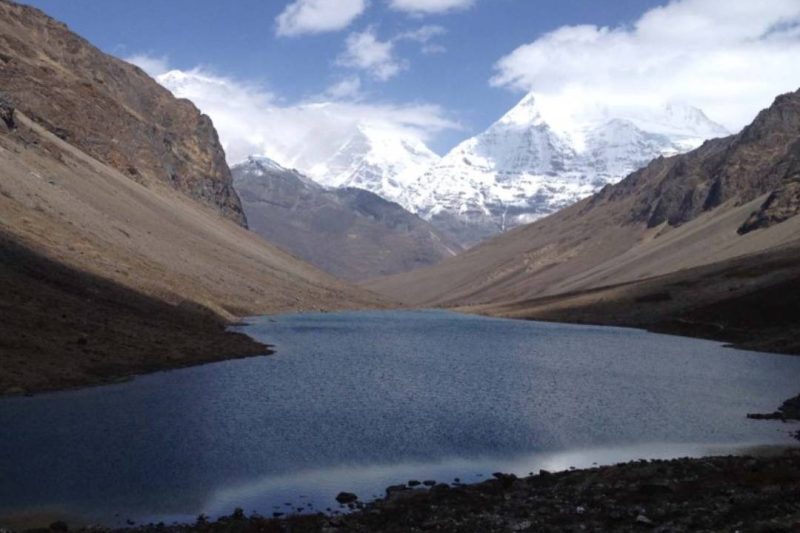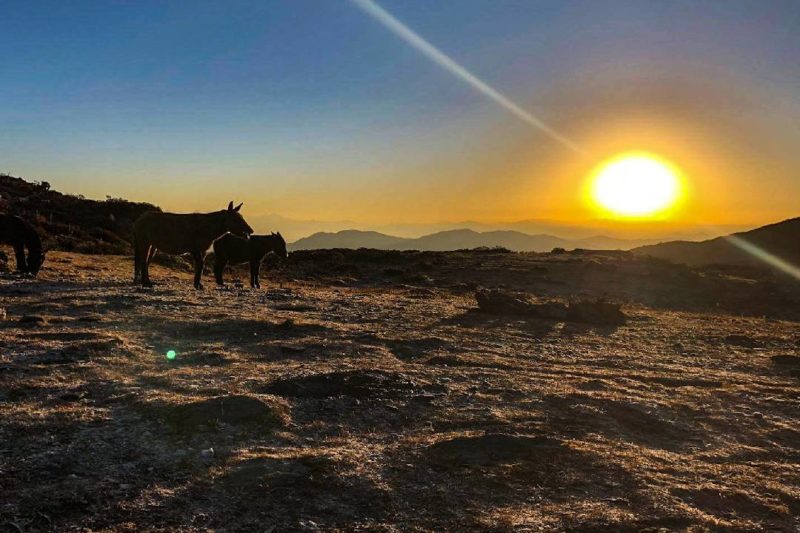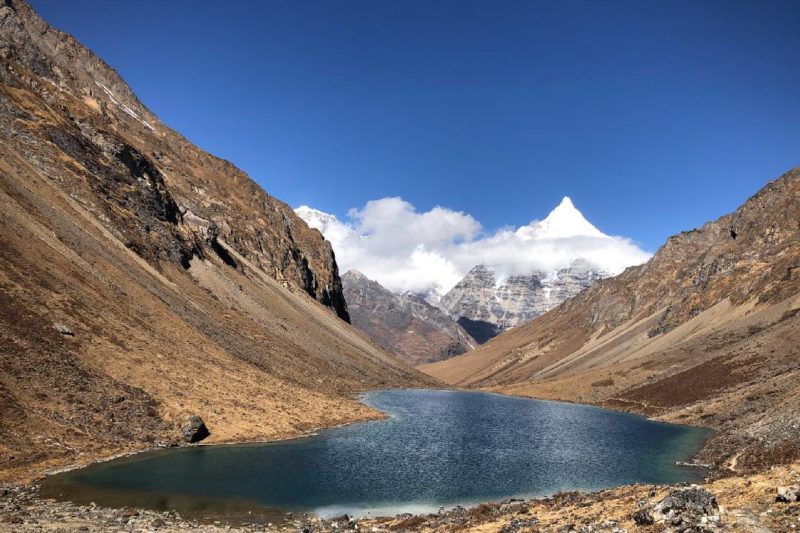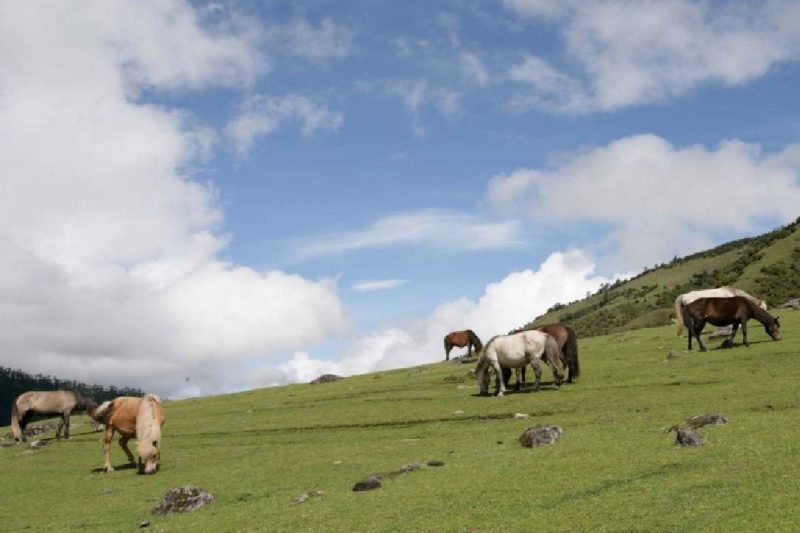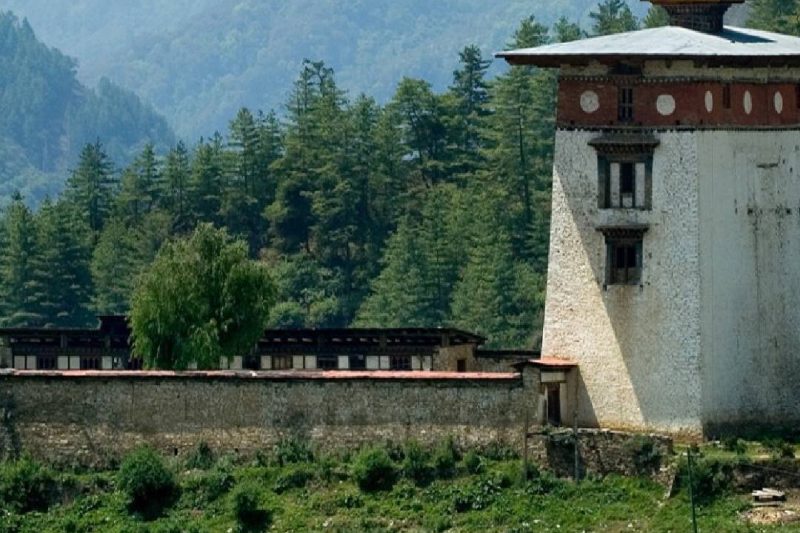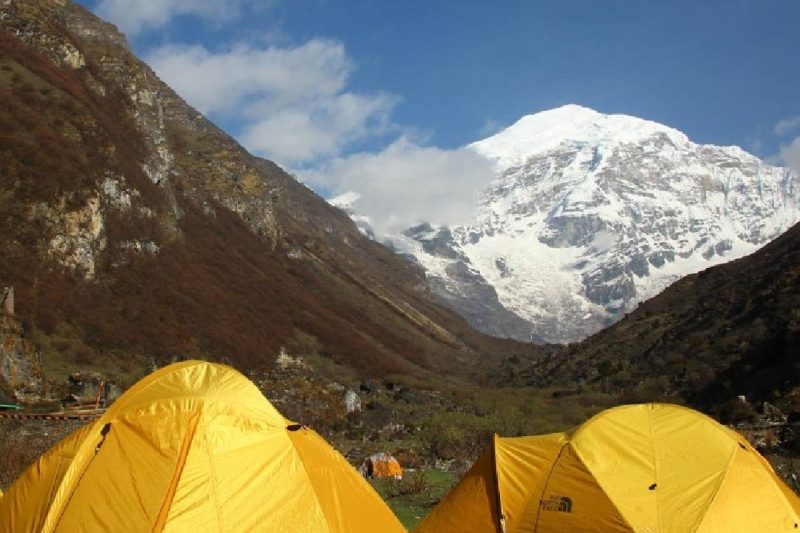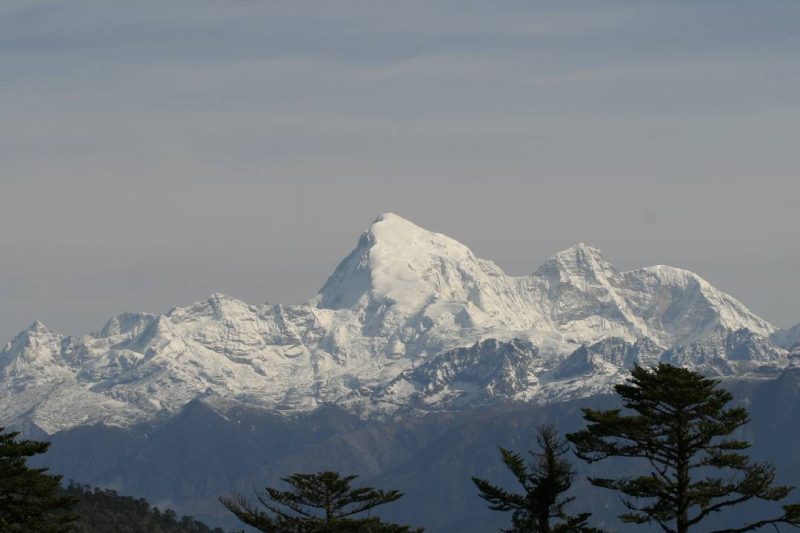The Bumthang Owl Trek is a fairly easy three-day trek that takes you to explore the place of interest and learn about the culture, history, and lifestyle of local people in the western and central parts of Bhutan. The highlight of this trek is a three-day trek that passes through several villages, meadows, blue pine forests, and mountains of scrub bamboo in Bumthang.
Recommended time to experience the trek from March to May and September to November.
Altitude in Paro: 2280m
Onboard the aircraft, the flight is treated to spectacular views of snow peaked mountains and the Himalayan ranges. Paro airport (2,280m) is Bhutan’s only international airport where our dedicated team will receive you at the airport.
Paro Rinpung Dzong (Fortress of The Heap of Jewels)- Rinpung Dzong is an ancient fortress in traditional Bhutanese architecture with a complex of courtyards, temples, administration offices and open space surrounded by towering walls. All the buildings are equipped with huge windows with elaborate wooden carvings of traditional Bhutanese motifs. Paro Dzong is considered one of the finest examples of Bhutanese architecture and it’s one of the top tourist attractions in Bhutan. This impressive dzong is also seen during landing into Paro Airport.
National Museum of Bhutan – Ta Dzong. Originally built as a watchtower in 1649, atop a hill above the Rinpung Dzong, overlooking the whole picturesque Paro valley. Converted into a museum in 1968, its extensive collection includes astonishing antique thangka paintings, weapons and armor, and rich diversity of natural and historic artifacts.
Shagzo (Bhutanese woodturning at Sangay Wood Turning Factory) - The shagzo techniques use the age-old methods and each product is unique in shapes, sizes and colours. Learn the Shagzopa (Shagzo artisans), the essential steps in creating the elegant and functional products like wooden bowls (dapa), cups (dza phob) and plates with beautiful patterns, while keeping the ‘soul’ of the wood in it.
Altitude in Thimphu: 2,320m
Folk Heritage Museum- get an insight into rural Bhutanese life and art.
National Textile MuseumThe heritage museum replicates a rural house in the mid-19th century, using rammed mud timber, presenting objects like the leopard-skin bags and Brokpa yak-hair ‘spider’ hats. The art of Thagzo (weaving) with different styles and on a variety of materials will also be presented.
Jungshi Handmade Paper Factory- Learn how the traditional Bhutanese paper Deh-sho is produced. Made from daphne and dhekap trees, Deh-sho paper is used by the monks for woodblock and manuscript books, and for writing prayer books.
Centenary Farmers Market (weekends only)- Located below the main town, near the Wang Chhu River, Thimphu’s weekend market is by far the largest domestic market for the farmers in Bhutan.
Farmers come from all over the country to sell their farm products in the market. With its wide assortment of fresh and organic produce, the Farmer’s Market has become a favourite spot for tourists and a recreational place for people from all walks of life.
National Institute for Zorig Chusum (The Arts and Crafts School or Painting school)- The students here are enrolled in a different course that teaches the 13 traditional arts of Bhutan.
Tashicho Dzong (Fortress of The Glorious Religion)- Tashichho Dzong has been the seat of the Bhutan government since 1952. Through the years, the dzong has gone through expansions and renovation and presently houses the throne room and offices of the king, the secretariat and the ministries of home affairs and finance. Other government departments are housed in buildings nearby.
Exploring the nooks and crannies of Thimphu city. Walk the streets of the capital, live the commotion, and experience the nightlife with good food and music.
Altitude in Trongsa: 2180m
Distance: 199km
Estimated time: 7hrs
Dochula Pass (3,050m)- Panoramic view of the Himalayan mountains. The pass is a popular location among tourists as it offers a stunning 360 degree panoramic view of the Himalayan mountain range. The view is especially scenic on clear, winter days with snowcapped mountains forming a majestic backdrop to the tranquility of the 108 chortens gracing the mountain pass.
Overnight at a hotel in Trongsa.
Altitude in Bumthang: 2800m
Distance: 68km
Estimated time: 3hrs
Trongsa Dzong – The stunning dzong at Trongsa commands an impressive position above the Mangde River and is visible for many miles around. Within the walls a maze of courtyards and corridors reveal temples and towers adorned with colorful mandalas and Buddhist statues. The great watchtower, overlooking the town, offers breathtaking views of the dramatic valley landscape. The Dzong served as the seat of the Wangchuck dynasty before the enthronement of the first king in Bhutan.
Ta Dzong – The Ta Dzong is a majestic circular five story tower flanked by two lower towers. With its magnificent design and impressive aesthetic, the Ta Dzong is an awe-striking marvel of traditional Buddhist architecture and a popular tourist attraction. Converted into the National Museum of Bhutan, one of the most fascinating museums travelers can find in the country.
Jambay Lhakhang- Belonging to the 108 temples built by the Tibetan King Songsten Gampo in the 7th century. It is believed that a supine demoness was causing obstruction to the spread of Buddhism, and the temples were constructed on her body parts that spread across Tibet, Bhutan and the borderlands.
Kurjey Lhakhang- The large, active and important temple complex is named after the body (kur) print (jey) of Guru Rinpoche, which is preserved in a cave inside the oldest of the three buildings that make up the complex.The first temple, also the most sacred one, was erected in 1652 and is where the body print of Guru Rinpoche is protected. The second one was constructed by Ugyen Wangchuck, the first king of Bhutan, and the third temple was established by Ashi Kesang Wangchuck, queen to the third king, in 1984.
Kurjey Drupchu- located next to the Kurjey temple, the holy water believed to be blessed by Guru Rinpoche can be found.
Distance: 20km
Estimated time: 5-6hrs
Camp altitude: 2800m
Start of Trek. The trek follows the Chamkhar Chhu and passing through villages and temples, meadows, forests of blue pine, and shrubs bamboo. Lunch at Thangbi Lhakhang and continue on to Ngang Yul (Land of the Swan) at the center of which lies the Ngang Lhakhang (Swan Temple). It is believed that the valley was populated by swans hence the name Ngang Yul.
Distance: 23km
Estimated time: 7-8hrs
Camp altitude: 2670m
The trek continues with a gradual climb to Phephe La Pass at an altitude of 3353 m, the highest point of the trek route. The trail passes through various forested areas and stops can be made to absorb the beauty., Ugyenchholing village is the next camp site which is a descend down from Tang valley. The camp site will be set up next to the river.
Distance: 10km
Estimated time: 2-3hrs
Ugyenchholing Dzong is the next stop including visits to the beautiful private mansion and eco-museum. Continuing on the trail follows the Tang Chu, another trout-filled river and pass the Mebar Tsho (The Flaming Lake) one of the holiest sites in the region. The sacred lake is related to the renowned religious treasurer Terton Pema Lingpa.
Vehicle pick up will be organized at this point which then concludes the three-day trek.
Altitude in Punakha: 1300m
Distance: 212km
Estimated time: 8hrs
Drive to Punakha valley with sightseeing en-route.
Altitude in Paro: 2,280m
Distance: 125km
Estimated travel time: 4hrs
Sangchhen Dorji Lhuendrup Lhakhang Nunnery- Perched on a hilltop overlooking the beautiful Punakha and Wangduephodrang valley.
Surrounded by rich lush green pine forest the nunnery complex is a true expression of Bhutanese architecture portraying strong traditional values.
Punakha Dzong (Palace of Great Happiness)- Built-in 1637, it is said to be the most spectacular dzong in Bhutan. Punakha Dzong was built at the confluence of two major rivers in Bhutan, the Pho Chhu and Mo Chhu, which converge in this valley.
In addition to its structural beauty, until the mid-1950s, it still served as Bhutan’s capital and the seat of the government. All of Bhutan’s kings have been crowned here, and it has witnessed the memorable wedding of the King of Bhutan, Jigme Khesar Namgyel Wangchuck to Jetsun Pema in 2011.
Chimi Lhakhang- Hike to the Temple of Fertility (altitude: 1,500m). An enjoyable hike, taking about 30 minutes through the rice and mustard fields and the uniquely decorated houses of Lobasa Village.
Altitude in Paro: 2,280m
Taktsang Monastery, or the Tiger’s Nest (highest altitude: 3,120m)- A 4.5 km hike that will typically take 5-6 hours ascending around 600m to reach the destination. An experience through dense enchanted forests and spectacular mountain scenery along the trail.
Kyichu Lhakhang- one of the 108 temples built throughout the Himalayas by the Tibetan King Songtsen Gampo in the 7th century. The main chapel has roots as far back as the 7th century, with additional buildings and a golden roof added in 1839 by the penlop (governor) of Paro and the 25th Je Khenpo. Elderly pilgrims constantly shuffle around the temple spinning its many prayer wheels, making this one of the most charming spots in the Paro valley.
Traditional meal at a farmhouse learning about Bhutanese daily life. A traditional hot stone bath at the farmhouse after all the hiking is also an option provided for relaxation.
A stroll through Paro town.

